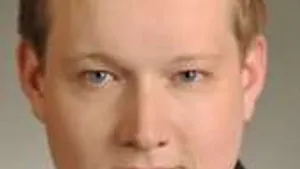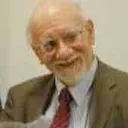Found in translation
Lyric Fest's "Rosetta Stone'

I missed the last Lyric Fest concert— "Journey toward Freedom," with Denyce Graves"— because of conflicts, but a relative followed my recommendation and gave it a try. "I'm not sure what that was," he remarked afterward, "but it was really good."
I now realize that I'd I had failed to warn him in advance that Lyric Fest programs usually involve a theme, with a narrator and a few enlivening touches. My relative had assumed he'd hear a series of musical numbers when he attended the group's March program on the music of the Civil Rights Movement. Instead, he found himself sitting in a pew in First Presbyterian church, immersed in an event that included elements of a Southern church service as well as a charged-up political rally.
The final concert of Lyric Fest's tenth season adopted a more conventional format: Three vocalists sang art songs in front of a piano. But Lyric Fest never does anything quite the way anyone else would do it.
Only Lyric Fest would have conceived the theme for this program: songs by composers who created musical settings for texts "in languages other than their own." The concert was called "The Rosetta Stone," music being the Rosetta Stone that conveys the feelings and nuances that are usually lost in translation.
Ives mimics Brahms
Conveniently for this concept, the world's most popular second language happens to be the native language of most Americans. So the lineup could offer English-language songs by Stravinsky, Kurt Weil, and Erich Korngold. But it also included Italian songs by Benjamin Britten, French songs by Samuel Barber, German lieder by Charles Ives, and Spanish songs by a less well-known American, Peter Lieberson.
Charles Ives wrote his German lieder as student exercises; he included them in his published works, somewhat cantankerously, because he was criticized for setting texts that had already been used by composers like Brahms and Schumann. Interestingly, these Ives works are good examples of musical settings that seem to follow the natural flow of the language.
The three vocalists all took on song groups that developed a subject and displayed their emotional and musical range. Tenor George Ross Somerville tackled the longest group, Benjamin Britten's setting of seven sonnets by Michelangelo.
21st-Century love story
The sonnets were inspired by a thinly veiled same-sex passion, and the songs reflect Britten's own relationship with his long-term partner, tenor Peter Pears. Somerville's robust tenor ranged through an emotional spectrum that included passion, flirtatiousness, tumult and a final majestic solemnity.
Mezzo Suzanne DuPlantis produced a passionate, operatic performance of three songs by Peter Lieberson, based on Spanish poems by Pablo Neruda. The songs were composed as a gift to the composer's wife, mezzo Lorraine Hunt Lieberson, and they've become a monument to a 21st-Century love story. Hunt debuted the songs in 2005, when she was terminally ill with breast cancer just six years into their marriage. Lieberson himself died six years later of lymphatic cancer.
The songs end with a beautiful thought: that love is an eternal river, without birth or death, that passes through new lands as it travels from lover to lover.
Refugees from Hitler
Soprano Randi Marrazzo's major entries were the Ives lieder and a set of Spanish Sephardic songs by Italian composer Mario Castelnuovo Tedesco. Like her colleagues, Marrazzo put her opera training to good use and created small scenes for the Sephardic songs, which included a cheeky confrontation with a judge and the good-natured observation that the wheel of life rotates between sinning and doing penance. A few Italian hand gestures enhanced the Spanish-Italian-Jewish cross-cultural communication.
Four pieces by two refugees from Hitler's Europe provided contrasting approaches to Shakespeare. Igor Stravinsky applied the eight-note tone row method to two of Shakespeare's songs, with mixed results.
In the first, the tone row gave Somerville a vocal line that sounded like a speech by a first-class Shakespearean. In the second, Somerville had to work with a tone row that wasn't very appealing.
Korngold in Hollywood
Erich Korngold vowed he wouldn't write any serious concert works as long as Hitler ruled Germany, and his Shakespeare settings displayed the qualities that made him a top movie composer during the Third Reich hiatus. Randi Marrazzo added brightness to the lyrical touches in his setting of Under the Greenwood Tree and presented an affecting performance of the folk-like melody Korngold composed for Desdemona's Song.
Marrazzo and DuPlantis turned to another refugee for their finale. Marrazzo sang Kurt Weill's My Ship with appealing simplicity, and DuPlantis added style and dash to I'm a Stranger Here Myself, with lyrics by the immortal librettist Ogden Nash.
Laura Ward's piano accompaniments once again provided the mood and nuance that place art songs in an effective frame. In most art songs, the accompaniment is a primary element in the musical Rosetta Stone, even when the song is sung in your native language.
I now realize that I'd I had failed to warn him in advance that Lyric Fest programs usually involve a theme, with a narrator and a few enlivening touches. My relative had assumed he'd hear a series of musical numbers when he attended the group's March program on the music of the Civil Rights Movement. Instead, he found himself sitting in a pew in First Presbyterian church, immersed in an event that included elements of a Southern church service as well as a charged-up political rally.
The final concert of Lyric Fest's tenth season adopted a more conventional format: Three vocalists sang art songs in front of a piano. But Lyric Fest never does anything quite the way anyone else would do it.
Only Lyric Fest would have conceived the theme for this program: songs by composers who created musical settings for texts "in languages other than their own." The concert was called "The Rosetta Stone," music being the Rosetta Stone that conveys the feelings and nuances that are usually lost in translation.
Ives mimics Brahms
Conveniently for this concept, the world's most popular second language happens to be the native language of most Americans. So the lineup could offer English-language songs by Stravinsky, Kurt Weil, and Erich Korngold. But it also included Italian songs by Benjamin Britten, French songs by Samuel Barber, German lieder by Charles Ives, and Spanish songs by a less well-known American, Peter Lieberson.
Charles Ives wrote his German lieder as student exercises; he included them in his published works, somewhat cantankerously, because he was criticized for setting texts that had already been used by composers like Brahms and Schumann. Interestingly, these Ives works are good examples of musical settings that seem to follow the natural flow of the language.
The three vocalists all took on song groups that developed a subject and displayed their emotional and musical range. Tenor George Ross Somerville tackled the longest group, Benjamin Britten's setting of seven sonnets by Michelangelo.
21st-Century love story
The sonnets were inspired by a thinly veiled same-sex passion, and the songs reflect Britten's own relationship with his long-term partner, tenor Peter Pears. Somerville's robust tenor ranged through an emotional spectrum that included passion, flirtatiousness, tumult and a final majestic solemnity.
Mezzo Suzanne DuPlantis produced a passionate, operatic performance of three songs by Peter Lieberson, based on Spanish poems by Pablo Neruda. The songs were composed as a gift to the composer's wife, mezzo Lorraine Hunt Lieberson, and they've become a monument to a 21st-Century love story. Hunt debuted the songs in 2005, when she was terminally ill with breast cancer just six years into their marriage. Lieberson himself died six years later of lymphatic cancer.
The songs end with a beautiful thought: that love is an eternal river, without birth or death, that passes through new lands as it travels from lover to lover.
Refugees from Hitler
Soprano Randi Marrazzo's major entries were the Ives lieder and a set of Spanish Sephardic songs by Italian composer Mario Castelnuovo Tedesco. Like her colleagues, Marrazzo put her opera training to good use and created small scenes for the Sephardic songs, which included a cheeky confrontation with a judge and the good-natured observation that the wheel of life rotates between sinning and doing penance. A few Italian hand gestures enhanced the Spanish-Italian-Jewish cross-cultural communication.
Four pieces by two refugees from Hitler's Europe provided contrasting approaches to Shakespeare. Igor Stravinsky applied the eight-note tone row method to two of Shakespeare's songs, with mixed results.
In the first, the tone row gave Somerville a vocal line that sounded like a speech by a first-class Shakespearean. In the second, Somerville had to work with a tone row that wasn't very appealing.
Korngold in Hollywood
Erich Korngold vowed he wouldn't write any serious concert works as long as Hitler ruled Germany, and his Shakespeare settings displayed the qualities that made him a top movie composer during the Third Reich hiatus. Randi Marrazzo added brightness to the lyrical touches in his setting of Under the Greenwood Tree and presented an affecting performance of the folk-like melody Korngold composed for Desdemona's Song.
Marrazzo and DuPlantis turned to another refugee for their finale. Marrazzo sang Kurt Weill's My Ship with appealing simplicity, and DuPlantis added style and dash to I'm a Stranger Here Myself, with lyrics by the immortal librettist Ogden Nash.
Laura Ward's piano accompaniments once again provided the mood and nuance that place art songs in an effective frame. In most art songs, the accompaniment is a primary element in the musical Rosetta Stone, even when the song is sung in your native language.
What, When, Where
Lyric Fest: “The Rosetta Stone.†Songs by Stravinsky, Korngold, Barber, Liszt, Ives, Lieberson, Britten, Tedesco, Ravel and Weill. George Ross Summerville, tenor; Randi Marrazzo, soprano; Suzanne DuPlantis, mezzo soprano; Laura Ward piano. May 5, 2013 at Academy of Vocal Arts, 1920 Spruce St. (215) 438-1702 or www.lyricfest.org.
Sign up for our newsletter
All of the week's new articles, all in one place. Sign up for the free weekly BSR newsletters, and don't miss a conversation.

 Tom Purdom
Tom Purdom